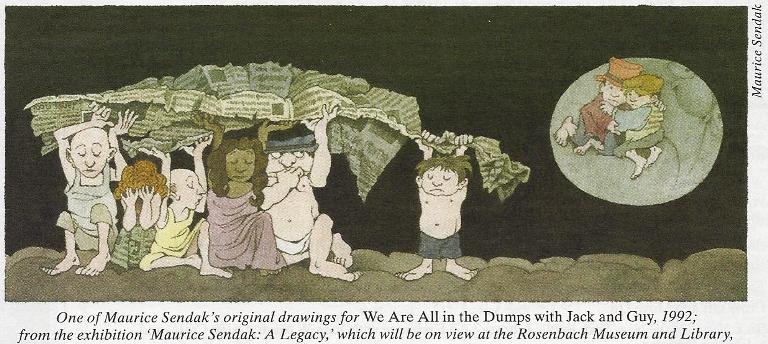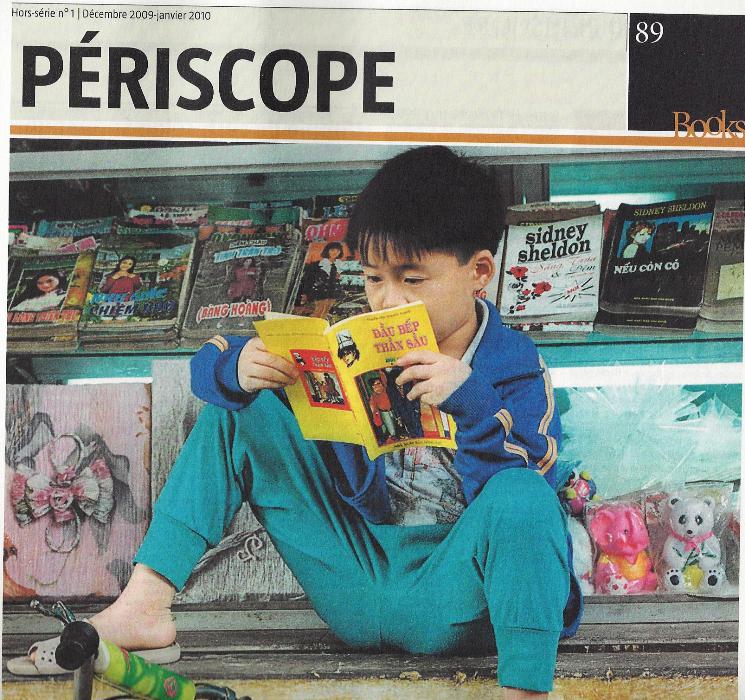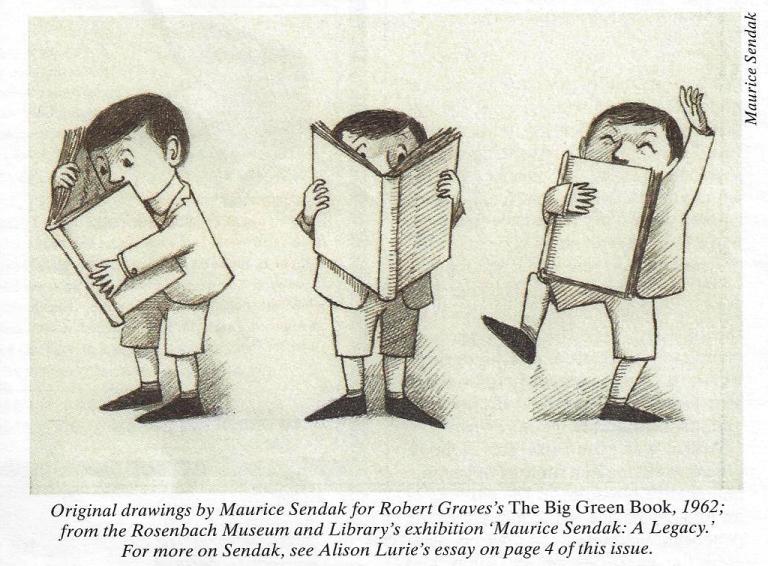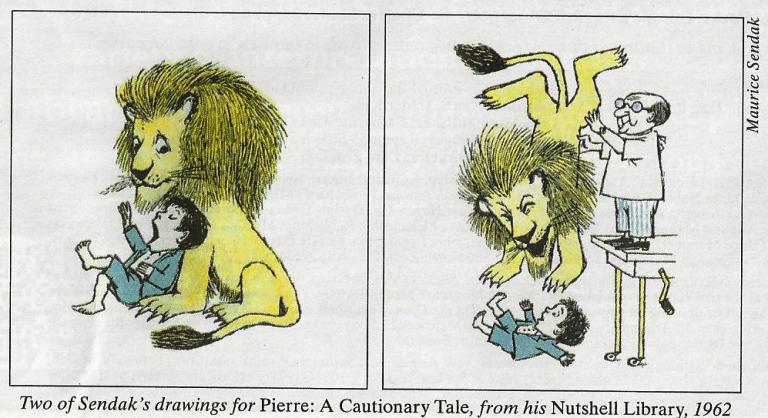
Trang Thiếu Nhi
|
Something
Wonderful Out of Almost Nothing
Một điều gì
tuyệt vời bò ra từ chẳng có gì!
Anh Cu Tí mắc cái bịnh, kể như
là bịnh xấu tính, mà theo những nhà tâm lý học,
có thể là do xì-trét, đì-prét, hoặc do buồn
quá, đếch có bạn chơi.
Nó vứt tình yêu của bố mẹ vô thùng rác:
Một bữa má nó nói
Khi Cu Tí vừa bỏ ra khỏi
giường
Chào Cu Tí cưng của má
Cu Tí bèn buông một
câu,“Con đếch cần!”
Cũng bằng 1 cách cáu giận như
thế, cu cậu lắc đầu trước mọi dụ dỗ
của bà mẹ.
Bất cứ ai nói cái gì, đưa cho cái gì, là Anh Cu Tí phán,“Ta đếch cần”!
Và khi bố mẹ đi làm, một con "sử tử đói" xuất hiện:
Nó nhìn vào
tận mắt Cu Tí
Và hỏi, mi muốn sống hay muốn chết?
Anh Cu Tí buông 1 câu, “Tao đếch cần”!
Thế
là nó bèn xơi tái Anh
Cu Tí!
Something
Wonderful Out of Almost Nothing
Alison Lurie
Only a few
people have been both great writers and great illustrators of
children's books.
In the nineteenth century there was Edward Lear, and in the twentieth
Dr. Seuss
and – perhaps the most gifted of them all – Maurice Sendak, who died in
May at
the age of eighty-three.
Sendak's
best-known work, Where the Wild
Things Are (1963), shocked some adult readers
at first; later it was recognized as a brilliant breakthrough. It gave
graphic
expression to what every parent knows - that kids are sometimes angry
and even
violent; and it proposed that these impulses could be explored and
enjoyed
rather than repressed and denied. Within a few
years Where the Wild Things Are
was a recognized classic. It wasn't a fluke:
the same originality and psychological insight was already evident in
Sendak's
earlier work, most notably perhaps in Pierre: A Cautionary Tale, the
best of
the four tiny books (each less than 3 by 4 inches) in his Nutshell
Library (1962).
The classic
cautionary tale is a story, often in verse, in which a child misbehaves
and is
severely punished. Usually the tone is
exaggerated and comic, but it can also be frightening. In Heinrich
Hoffmann's Struwwelpeter (1845), which terrified
generations of kids, a little boy who
sucks his thumbs gets them cut off by giant scissors. Hilaire Belloc's Cautionary Tales (1907) are lighter in
tone, but they follow the standard plot of bad behavior and awful
retribution.
(1) As usual in such tales, adult friends and relatives utter warnings,
but they
don't do anything to protect the child or seem very upset by what
happens. In
Belloc's "Jim, who ran away from his Nurse, and was eaten by a Lion,"
his mother merely remarks afterward:
"Well-it gives me no
surprise,
He would not do as he was told!"
His Father, who was self-
controlled
Bade all the children round attend
To James's miserable end,
And always keep a-hold of Nurse
For fear of finding something worse.
This is a
joke, of course, but not a very pleasant one.

Philadelphia,
June 10, 2012-May 26, 2013
***
Sendak's
Pierre suffers from what looks like bad temper and sulkiness, but could
be the
kind of apathy that, according to psychologists, is one of the symptoms
of
depression. He rejects his parents' love:
One day his mother said
when Pierre climbed out of bed,
"Good morning, darling boy,
you are my only joy."
Pierre said, "I don't
care!"
With
similar
angry indifference, Pierre responds to offers of cream of wheat with
syrup and
a trip to town. No matter what anyone says, he replies, "I don't
care!" After his parents leave, "a hungry lion" appears:
He looked Pierre right in
the eye
and asked him if he'd like to die.
Pierre said, "I don't care!
"
...
"Is that all you have to
say?"
"I
don't care! "
"Then I'll eat you, if I
may."
"I
don't care! "
So the lion ate Pierre.
When his
parents get home they find the lion sick in Pierre's bed. Unlike Jim's
parents,
they do not accept this with equanimity:
They pulled the lion by
the hair.
They hit him with the folding
chair.
His mother asked, "Where is
Pierre?"
The lion answered, "I don't
care!"
His father said, "Pierre's
in
there!"
There
are
several ways of understanding this. One is that the incorporation,
physical or
psychological, of hostile, unpleasant persons can make you ill. It may
also be
that the lion, like Max's Wild Things in Where the Wild Things Are, is an
emanation from Pierre's psyche, or Pierre turned inside out. It would
be a
mistake to think that Sendak was unaware of these possibilities, or of
the
psychological sophistication of his story. After all, he lived with the
child
psychiatrist Eugene Glynn for fifty years-until Glynn's death in 2007
at the
age of eighty-one.
Unlike most
earlier cautionary tales, Pierre has a happy ending. The parents take
the lion
to a doctor, who turns him upside down, and Pierre falls out:
He rubbed his eyes and
scratched
his head and laughed because he
wasn't
dead.
***
The lion
looks happier too; he goes home with Pierre and his family, and stays
on
"as a weekend guest." As in Where the Wild Things Are, disruptive
impulses
are not rejected or suppressed, but accepted and incorporated into real
life,
though within limits: the lion visits but does not join the family.
Pierre is
not punished, but saved. As Sendak says at the end:
The moral of Pierre
is CARE! (2)
***
A brilliant
illustrator can transform any story, revealing its possible meanings
and
sometimes changing them. Alice
in Wonderland and Through the Looking-Glass would
be less
scary without John Tenniel's drawings (especially those of the Duchess
and the Jabberwocky),
and Winnie-the-Pooh less
lovable without the help of Ernest Shepard. Maurice
Sendak brought his artistic talents to over seventy works by other
writers,
always making them more interesting.
Most popular
illustrations of the Grimms' fairy tales, for instance, soften and
prettify
them. Sendak turns them into crowded dreams full of strange birds and
beasts,
in which there is understanding for the villains, including the
crippled witch
in "Hansel and Gretel" and Snow-White's stepmother with her fading
beauty and fixed stare. He also notably illustrated three collections
of tales
by Isaac Bashevis Singer with drawings full of wise animals and flying
demons
that heighten their fantastic side and recall the paintings of Marc
Chagall.
As well as
interpreting classic tales, Sendak could make something wonderful out
of almost
nothing. In We Are All in the Dumps
with Jack and Guy (1993), for instance, he transforms two old British
non-sense
rhymes into a tale about homelessness, crime, and charity. His pictures
make it
clear that the story takes place in New York, and that the first lines
can be
understood in different ways:
We are all in the dumps
For diamonds are trumps
Sendak's
characters are both depressed and living in a kind of abandoned dump.
Evil-looking rats are cheating at cards, and the Trump Tower and a
huge,
worried-looking moon rise above a city where money triumphs over
everything.
Lost children shelter in cardboard boxes or huddle under pages of The New York Times full of ads for cheap
mortgages and news of lost jobs.
Presently a
lot of kittens and a little African-American boy are kidnapped by the
rats. But
up in the sky three angels are reading all about it in the newspaper,
and help
is on the way. The moon turns into a huge white cat who rescues the
kittens.
The kidnapped boy escapes and is discovered by two young toughs:
Jack and Guy went out in
the rye
And they found a little
boy with
one black eye
Come says Jack let's
knock him
on the head
No says Guy let's buy him
some
bread
You buy one loaf, and
I'll buy two
And we'll bring him up as other
folk do
The last
picture in the book shows all three of them and other homeless children
asleep
in their urban jungle, surrounded by smiling kittens. Life in the city
is
scary, mean, and precarious, Sendak's pictures tell us, but impulsive
goodness
also exists. There are other possibilities here too: one critic has
interpreted We Are All in the Dumps as, among
other things, a kind of Christian allegory. (3)
One proof
that some work of art is a classic is that each time you revisit it you
see it
differently. When I reread We Are All in
the Dumps this week, I realized that it can also be viewed as a
story about
the interracial adoption, by two males, of an abused and abandoned
child. No doubt
other readers will continue to find new meanings in all of Sendak's
best work,
for many years to come.+
(1) Belloc
also illustrated his own verses, but not always very well.
(2) In an
odd coincidence, over thirty years later Sendak would illustrate
another book
called Pierre: Herman Melville's strange and awkward novel, whose
eponymous
hero is far more conflicted and negative than the earlier Pierre, and
fails to
escape his problems.
(3) See Peter F. Neumeyer,
"We Are All in the Dumps
with Jack and Guy: Two
Nursery
Rhymes with Pictures by Maurice Sendak," Children's Literature in
Education, Vol.25, No 1 (1994)
The NYRB
July 12, 2012
|




